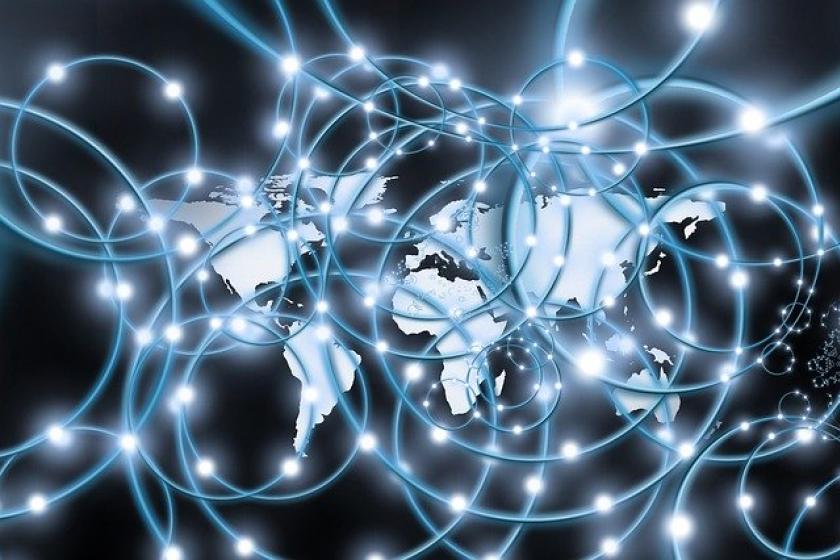The CDN Era Requires New Network Visibility StandardsThe CDN Era Requires New Network Visibility Standards
Leveraging tools that pinpoint outages and other network issues lets providers understand whether it was their own network, the connectivity provider, or the content provider having the issue.
June 10, 2020

Content delivery networks (CDNs) aren’t just for websites and streaming media anymore. They are essential for many businesses. In fact, more than ninety percent of content traffic we see today comes from a CDN, be it commercial or purpose-built. It's essentially impossible to build a content service with a noteworthy user base without using a CDN. Social networks, streaming services, gaming services, and the like: Anything that conveys reach and heavy or performance-sensitive data requires a CDN.
To make content delivery work at this scale, providers must rely on CDNs, which are all logical overlays on top of the internet. The arrangement works like this: CDNs are public clouds closer to the end users. In fact, all three major public cloud providers offer CDN caching services as part of their offerings. Unfortunately, this new paradigm comes with challenges for network engineers.
For residential internet service providers (ISPs), CDNs are positioned between them, connectivity providers, and content providers. Furthermore, there are more than 50 different CDNs. They must accommodate multiple different types of network traffic, connectivity, geographical spread, and mix of their own network, as well as the cache servers they embed into ISPs' last mile. Each of these comes with variable performance and cost. ISPs must understand from where the traffic enters their network, where it comes from, what type of customer is using it, and the connectivity type. This convoluted arrangement greatly reduces network visibility.
This is the new reality for ISPs. Here is how they can address this challenge.
Downtime and Performance-Impacting Events
What consumers see and what ISPs and content providers see when it comes to network problems are totally different visions.
Consumers experience a service that isn't working effectively: slow internet, buffering while streaming video, video games lagging, for example. To view this content, consumers subscribe to an ISP, which connects them to the internet so they can access content from outside the ISP's network. These ISPs are commonly referred to as "eyeball" ISPs.
When a service outage occurs, eyeball ISPs, like Comcast, may see a notification that a specific connectivity provider is down. But they don't see what service a subscriber is using, whether it is Spotify or Netflix, or even which CDN behind the connectivity provider is being used to display that content. The visibility problem doesn't arise from Comcast knowing whether or not there's capacity on its network. It comes from the fact Comcast doesn't know specifically what that traffic is being used for, or if the network issue is coming from their end, the content provider's end, or the CDN.
Clearing Things Up
An ISP's goal is to provide the best performance to the destinations and sources subscribers use the most at a cost that isn't prohibitive. But without visibility into these details, that becomes a major challenge. What can companies on all sides of this relationship do?
One method is deep packet inspection (DPI). This requires service providers to purchase expensive appliances and place them behind every network port. This can be helpful, but it might not solve the visibility problem if the ISP can't afford to roll out more DPI boxes as traffic grows, or if managing such a high volume of hardware pieces becomes untenable. This form of network inspection is a start, but it will still leave opacity even if the ISP installs the hardware everywhere. Furthermore, while these appliances do a good job identifying over-the-top (OTT) applications (like YouTube or Spotify), they usually don't map which CDN is being used, which connectivity types are in the mix or their associated performance.
In order to support users' performance, companies must map CDN traffic first. Mapping also helps, but it doesn't get you the whole way there. Consumers care about the services they consume (Netflix or Spotify) and not which CDN delivers that content in a given moment.
Service providers must also know when, where, and why a when the service outage or subscriber service degradation happens in a timely fashion to keep subscriber satisfaction high. Leveraging tools that identify drops and pinpoint when outages and other network issues happen allows service providers to understand whether it was their own network, the connectivity provider, or the content provider's that was having the issue.
Enhanced Visibility Leads to Better Outcomes for All
Today, when a subscriber calls Comcast, Comcast may direct them to speak to Netflix. Netflix will very likely direct callers back to Comcast. If a service provider understands when a problem is occurring, it can more easily attempt to fix the problem. The front-line support teams of these organizations are typically heavily manned, so any efficiencies these teams gain immediately helps lower the cost of the service.
If ISPs are able to lower their cost of service by being ahead of network issues and supporting subscribers in a more efficient way, they stand a much stronger chance of outcompeting other ISPs in the long run. Unfortunately, the lack of visibility we've discussed hampers ISPs' abilities to understand issues impacting their network.
Consider instead, companies like Netflix, which own both the client app and their own content-delivery chain. This fact enabled Netflix to instrument end-to-end collection of user-performance data early in its life. Netflix owns a competitive advantage because of this visibility.
While owning the content-delivery chain the same way Netflix does isn't possible for ISPs, it's clear they explore other avenues for gaining end-to-end visibility. Hopefully, the mitigation practice of better identifying the details of network traffic issues will lead to a better experience for the entire industry and its subscribers everywhere.
About the Author
You May Also Like




